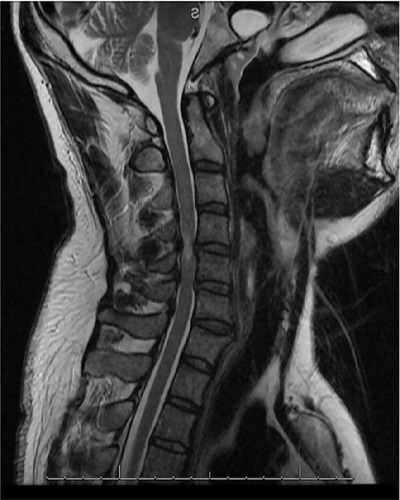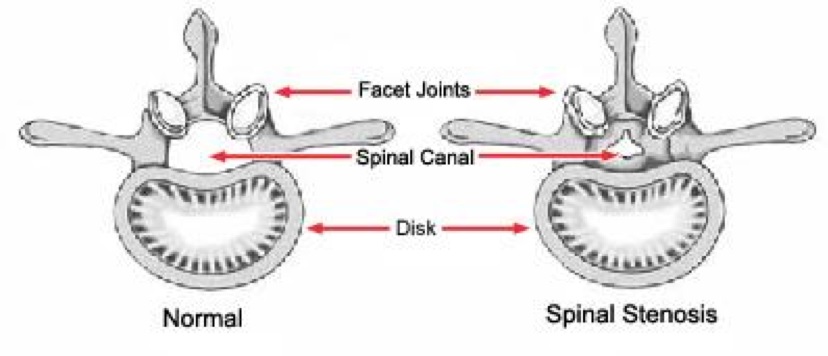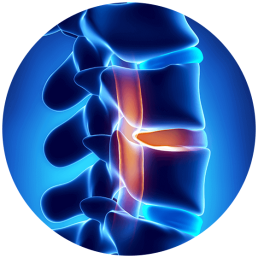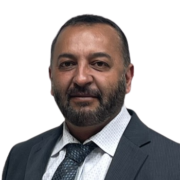Spinal Stenosis Symptoms & Treatment Options
Spinal stenosis is a general term that is used to describe a group of spinal conditions. These conditions involve a narrowing, or constricting, of the spinal canal. This narrowing can lead to compression of the spinal nerves, or even compression of the spinal cord itself. Compression can lead to inflammation, pain, problematic mobility, and difficulty participating in one’s everyday activities, progressive weakness and complete paralysis.
There are many different locations in the spine, as well as several spinal structures, in which spinal stenosis can occur. Stenosis can appear in the cervical (neck), thoracic (mid back or rib cage), or lumbar (lower back) segments of the spine. In addition, different types of spinal stenosis are identified by the structure of the spinal column in which the narrowing occurs. These types include: central canal stenosis, foraminal stenosis, and far lateral stenosis.
Types of Spinal Stenosis
Central spinal stenosis is a narrowing of the central spinal canal through which the spinal cord runs. This constriction can lead to pressure on, as well as inflammation of, the spinal cord. Irritation or compression of spinal tissues often results in a variety of troubling symptoms.
Foraminal stenosis involves the narrowing of the foramina (nerve openings) in the spine. The foramina are openings in the vertebrae that allow for nerve roots to branch outward from the spinal cord and to extend to far reaches of the body. When the foramina become smaller as a result of foraminal stenosis, spinal nerves often become compressed. This pinching of nerve tissue can lead to painful, even debilitating, symptoms of spinal stenosis.
Far lateral stenosis involves narrowing near the facet joints. These joints, located on the back side of our vertebrae, connect one vertebra to another and help with the many movements of our spine. Our spinal nerves branch off from our spinal cord, pass through the foramina, and then travel on through the facet joints. When these joints become compromised by age, injury, or other factors, compression of nerves can occur and pain can ensue.
Symptoms of Spinal Stenosis
As with many spinal conditions, the symptoms of spinal stenosis can seem very similar to other possible diagnoses. Additionally, symptoms can vary greatly from person to person, especially because stenosis can occur in different areas and structures of the spine. In order to accurately reach a diagnosis, it is important to consult a physician who can use all of the tools in their toolbox to fully assess the source of your pain and discomfort. That being said, if you experience any of the symptoms below, you may be dealing with spinal stenosis.
If you think you are experiencing any symptoms associated with spinal stenosis, please contact us for an appointment with Dr. Martin, Board Certified Spine Surgeon.
Causes of Spinal Stenosis
Just as there are many symptoms of spinal stenosis, there are nearly as many, if not more, causes of the condition. Most cases, however, occur due to age and degeneration of the spine, cartilages, joints and ligaments over years of activity and use. We use our backs in practically all of our daily activities. Walking, lifting, twisting, sitting up, and laying down all put strain on our spine. Frequent use, coupled with the drying out of our spinal discs, can wear down the spine, causing spinal components to move closer together. Conditions associated with older age, such as osteoarthritis or rheumatoid arthritis, can also accelerate this degeneration as well.
Chronic strain on the back is another major cause of spinal stenosis. Although we all use our back every day, some individuals use it even more strenuously. Individuals who are especially at risk for developing spinal stenosis include those who work in labor intensive jobs such as nursing, construction, or athletics. These individuals place chronic strain on their spine, which can accelerate spinal degeneration and the development of stenosis.
Other causes of stenosis can include: spinal tumors, herniated discs, thickened ligaments, and overgrown bones (or bone spurs).
Address The Following Symptoms With The Assistance Of A Medical Professional:
- An abnormal gait, leading to possible joint damage in the hips, knees, or ankles
- A pitched forward posture that makes it difficult to look ahead and ambulate
- Pain and stiffness in the lower back or in the location of the degenerative curve
- Tingling, loss of sensation, or stabbing pain because of pinched nerves and inflammation
- Loss of bowel or bladder function
- Frequent falls and loss of balance while walking or standing
- Gait claudication or inability of walking a distance without stopping to rest and recover
More about Dr. Matin
Spinal Stenosis Symptoms & Treatment Options
Spinal stenosis pain can be treated by Dr. Martin, give us a call to schedule an appointment.
We will provide different options of treatment.
Physical therapy and Pain management
Physical therapy is always a cornerstone in the treatment of spinal conditions including stenosis. In some instances, oral pain medications, whether over-the-counter or prescription strength, can help many deal with pain and inflammation, and assist patients to complete a program of rehabilitation.
Foraminotomy
If one is dealing with foraminal stenosis, then a foraminotomy may be required. This minimally invasive surgical procedure targets the narrowed foramina, and involves removal of bony material to increase the size of the foramina. This can relieve pressure and reduce pain.
Laminectomy or Laminotomy
The lamina is a thin bony layer on the vertebrae that covers the posterior surface of the spinal cord and neural elements. Often with central stenosis, removal of this structure is needed to decompress the spinal cord. A laminotomy removes a portion, whereas a laminectomy removes the whole. On occasion removal of a part of the facet joints will assist with decompression of the lateral most aspect of the canal without creating instability.
Spinal Fusion Surgery
When further decompression and removal of joints is surgically necessary sometimes patients will left with instability of the segment of the spine addressed. A spinal fusion is a surgical procedure that restores stability to the spine. With spinal stenosis, bone spur formation and thicker ligaments are often removed from the spine to release pressure around nerves or spinal cord. It then becomes necessary to reinforce the spine through mechanical fusion.






